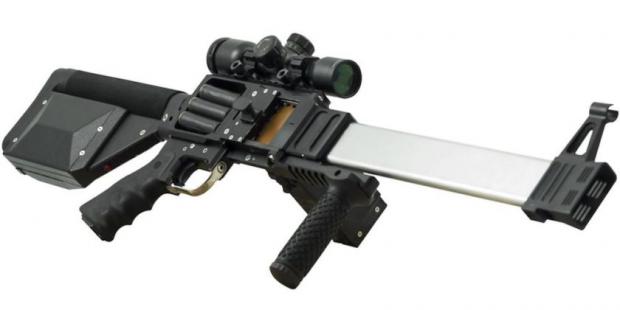
Breaking News
 They've Been Feeding You Poison (And Calling It Food)
They've Been Feeding You Poison (And Calling It Food)
 Tattoo ink may cause prolonged changes to the immune system
Tattoo ink may cause prolonged changes to the immune system
 Travel gadget promises to dry and iron your clothes – totally hands-free
Travel gadget promises to dry and iron your clothes – totally hands-free
 Duckweed: A sustainable, protein-packed food source smeared by Big Ag
Duckweed: A sustainable, protein-packed food source smeared by Big Ag
Top Tech News
 Perfect Aircrete, Kitchen Ingredients.
Perfect Aircrete, Kitchen Ingredients.
 Futuristic pixel-raising display lets you feel what's onscreen
Futuristic pixel-raising display lets you feel what's onscreen
 Cutting-Edge Facility Generates Pure Water and Hydrogen Fuel from Seawater for Mere Pennies
Cutting-Edge Facility Generates Pure Water and Hydrogen Fuel from Seawater for Mere Pennies
 This tiny dev board is packed with features for ambitious makers
This tiny dev board is packed with features for ambitious makers
 Scientists Discover Gel to Regrow Tooth Enamel
Scientists Discover Gel to Regrow Tooth Enamel
 Vitamin C and Dandelion Root Killing Cancer Cells -- as Former CDC Director Calls for COVID-19...
Vitamin C and Dandelion Root Killing Cancer Cells -- as Former CDC Director Calls for COVID-19...
 Galactic Brain: US firm plans space-based data centers, power grid to challenge China
Galactic Brain: US firm plans space-based data centers, power grid to challenge China
 A microbial cleanup for glyphosate just earned a patent. Here's why that matters
A microbial cleanup for glyphosate just earned a patent. Here's why that matters
 Japan Breaks Internet Speed Record with 5 Million Times Faster Data Transfer
Japan Breaks Internet Speed Record with 5 Million Times Faster Data Transfer
The Army May Have Found Its Next Rifle In A Colorado Garage

The Army adopted its battle rifle in 1963 and has spent 55 years looking for a replacement for the M-16 and its variants.
They might have found it in Martin Grier's Colorado Springs garage. Grier, a self-described inventor who has worked at a local bed and breakfast, built the new "ribbon gun" with a hobbyist's tools. It looks like a space-age toy drawn by a fifth-grader.
But goofy origins and cartoon-looks aside, this could be the gun of the future. The Army is studying Grier's gun and has ordered a military-grade prototype.
The specifications are incredible, four 6 mm barrels cut side by side within one steel block. New ammunition blocks fired by electromagnetic actuators that could theoretically give the weapon a firing rate of 250 rounds per second.
And then there's the feature no soldier would turn down. "It's called a power shot," Grier said.
That's the shotgun feature of this sniper-shot, machine-assault gun that can send four bullets simultaneously whizzing toward an enemy at more than 2,500 mph.
It isn't science fiction. He's built the gun and patented the technology behind it. Now his garage-based company, FD munitions, is hoping the Army will buy it.

 Advanced Propulsion Resources Part 1 of 2
Advanced Propulsion Resources Part 1 of 2

